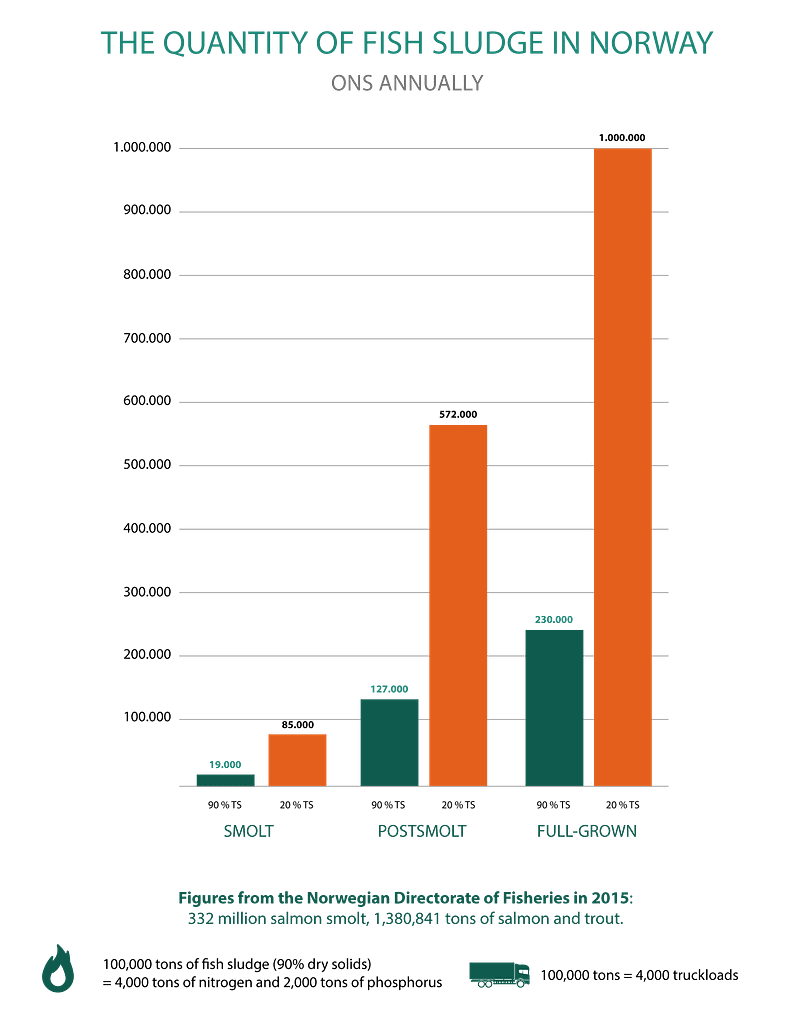Circular Economy
– Reuse of essential nutrients
The fish sludge processed by Bioretur consists of feed residues and fish feces from the the aquaculture facility. The sludge contains minerals such as phosphorus and nitrogen, as well as heavy metals like zinc and cadmium. Therefore, the sludge must undergo a process before it can be safely reintroduced back into the system, such as in the form of natural fertilizer. According to the Norwegian Institute of Bioeconomy Research (NIBIO), approximately 27,000 tons of nitrogen and 9,000 tons of phosphorus end up in the sea each year in the form of fish sludge. By entering into a Bioretur Service Agreement, our customers contribute to addressing this issue by reducing waste and increasing resource availability.
Significant volumes (Graph to the right)
Currently, it is primarily in land-based and closed aquaculture facilities where sludge can be efficiently collected and processed. Due to stricter purification requirements, larger fish on land (post-smolt), and the expected development of fish farming on land, we will soon be dealing with enormous quantities of fish sludge that need to be collected, processed, transported, and refined.




